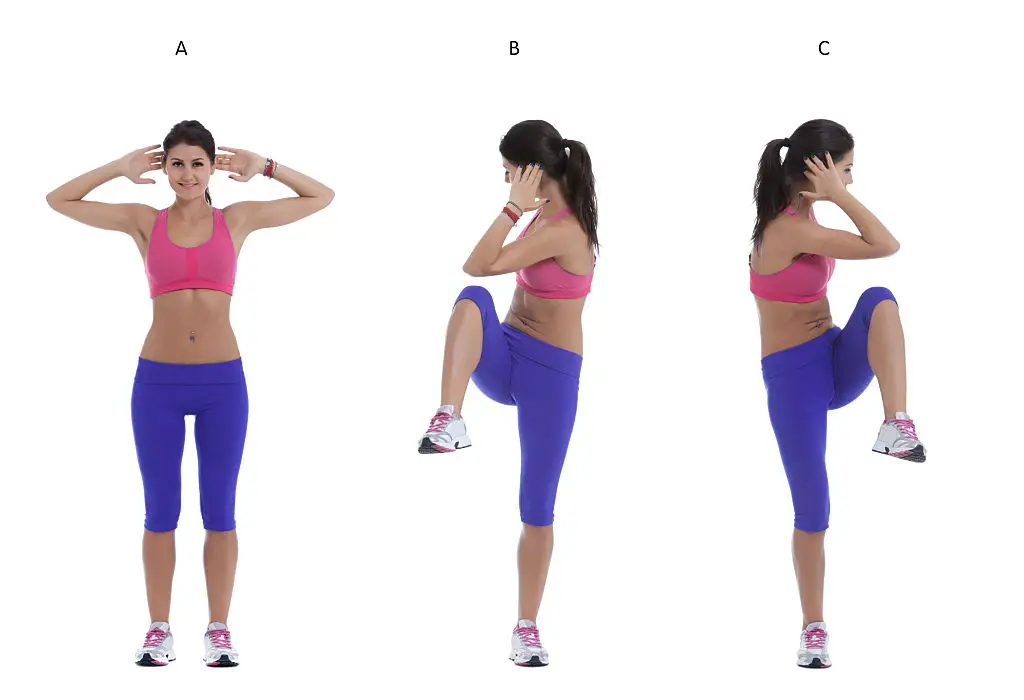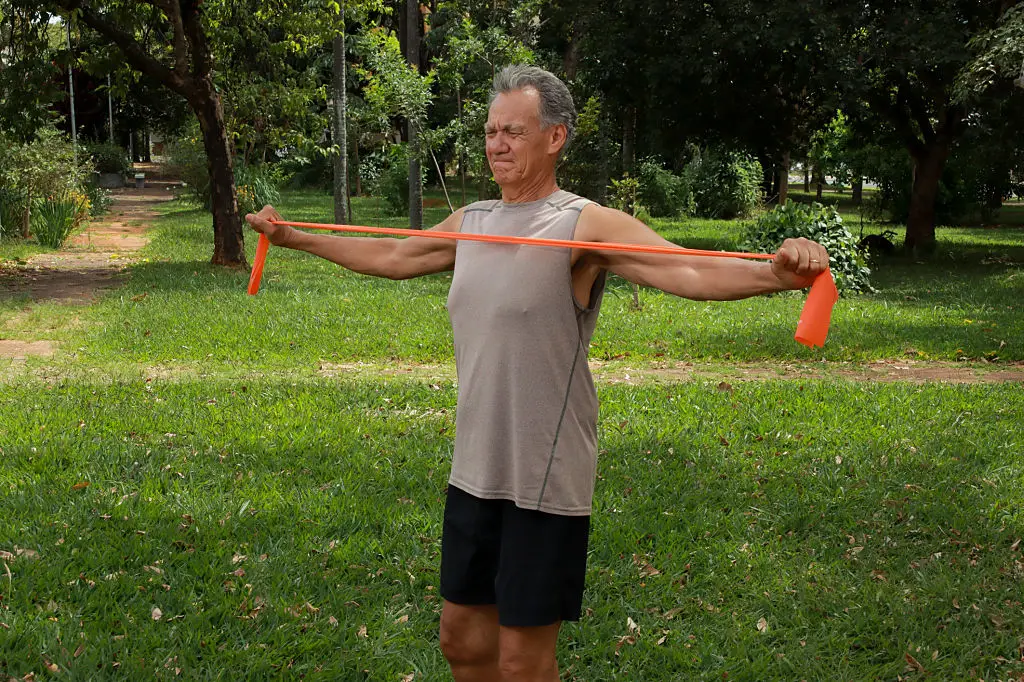Strength After 60: Simple Routines to Prevent Muscle Loss
9. Standing Ab Crunch: Deep Core Activation You Can Do Anywhere

A strong core is about stability more than six-pack muscles. Standing ab crunches gently activate deep core muscles without the need to get on the floor. Stand tall with feet hip-width apart, hands lightly touching your temples. Bring one knee up as you gently rotate your torso, aiming your elbow toward your knee. Lower, switch sides, and repeat. Each movement should feel controlled, not rushed. If balance is tricky, stand near a wall or hold a countertop. Want extra resistance? Use light ankle or wrist weights. Over time, this move can improve balance, support your spine, and help with posture—setting you up for every other exercise, and for easier breathing, too.
10. Resistance Band Rows (or Towel Alternative): Posture and Back Health

Good posture starts with a strong back, and rows are an easy way to get there—no gym required. Use a resistance band: secure the center under your feet, hold the ends, bend your knees slightly, and hinge forward a little at your hips. Pull both ends back, keeping elbows close, and squeeze your shoulder blades together. If you don’t have a band, a towel held taut between both hands works in a pinch—focus on “pulling apart” as you mimic the motion. Always keep your back long and neck relaxed. Start with slow, small reps and increase the number as you grow more comfortable. Back strength isn’t just for standing tall—it’s also for carrying, reaching, and moving through your day with less effort and more confidence.
